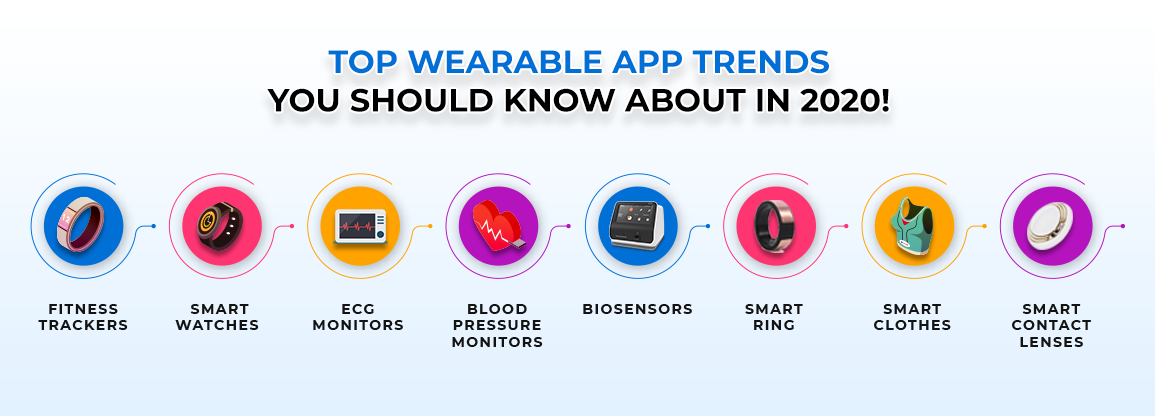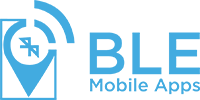Top Wearable App Trends You Should Know About in 2020!
- by BLE Mobile Apps

Advancements in technology happen every single day. Some new technology might be on the rise as you read this, and some might be retiring. Ultimately, it all boils down to the present scenario of necessity where a particular technology might play its role intended. Time has proved that technology is indeed making things better than yesterday. In addition to AI, IoT, VR, and AR, wearable technology trends are also emerging and finding its application in people’s lives.
Wearable app development trends are expected to reach up to 614.31 million units in 2025. This wearable app technology in today’s world is a monitoring device and makes a fashion statement. A healthcare wearable can also be a fashionable ring, and this dual advantage is what wearable technology is all about. It has quite a great recognition and visibility in the market from the past few years, and it is no doubt that several of them will linger in the market for a long time.
The hard-to-miss potential of wearable apps technology has made many top brands to adopt wearable app development services. Let’s see the must-know Wearable technology trends in 2020.
Fitness trackers
The past years have witnessed tracking your health through a wrist band. These healthcare wearables will continue to dominate the market for the forthcoming years as well. Technological advancements and approaches towards health monitoring through a wrist band or a bracelet will survive the tough competition. Tracking routine activities and reviewing them, these trackers also offer health recommendations when synced with specific healthcare mobile applications.
Smartwatches
Smartwatches made their entry in 2013. Apple’s first smartwatch made things easier and systematic for the possessor. Since then, many brands have adopted this direction. A smartwatch can track, monitor a person’s health, and display the result when linked with a mobile application. It can also transfer certain mobile functionalities to be activated with wrist movement. Their participation in wearable health technology will remain unchanged, and from monitoring health to clinical healthcare tools, they will continue to make their mark.
ECG monitors
The ECG monitors connect doctors and healthcare professionals by sending the patients’ ECG reading. They are capable of detecting atrial fibrillation. Smartwatches can monitor the steps counts, heart rates, and other parameters that can detect the symptoms at the time of occurrence. Thus these wearable devices in healthcare enable quick, confident, and consistent care for supporting patients.
Blood Pressure Monitors
Blood pressure monitors wearable technology is apt for the total blood pressure monitoring with in-built alarm features. This alarm feature notifies the users of blood pressure levels and to reduce efforts. Also, this healthcare device can send information to the patient’s practitioners. This wearable health technology is the best to detect stroke, hypertension, and low blood pressure problems. It is not surprising if it is the next wearable technology trend in healthcare.
Biosensors
Biosensors are considered to be one of the smartest wearable app trends. They are medical devices that sense movements, heart rate, respiratory rate, and also the temperature. Several smartwatches and wearable trackers come second to collecting data than biosensors. It is simple as an adhesive patch that gathers data while the patient is in movement. Hence, it is taken to be the best wearable trend in 2020
Smart rings
Next up in the race are Smart rings. They are best for businesses and individuals who are on their feet while attending meetings and managing stuff. They find receiving timely notifications without the need to check their smartphone now and then very convenient. But its usage is confined to receiving notifications and making payments or accessing their car controls or other synced appliances. It also helps keep track of one’s biometric activity, distance covered, caloric intake, etc. They are capable of sensing danger or health issues and activate the panic button for transmitting emergency help. These wearable health monitors are true masters, and some of them available in the market are Blinq, NFC Opn, Lycos, Oura, and Mc Lear. Plus, these rings are trackable via GPS, and you needn’t worry where you kept them anymore.
Smart clothes
Smart clothes have made it to the list! Companies like Athos have created shorts, T-shirts, and other clothing types that have built-in electromyography (EMG). It also has motion tracking sensors that are responsible for mapping muscle contraction and movement. They are designed especially for bodybuilding, CrossFit, weightlifting, and other strength-oriented training. They transmit information like Heart rate through Bluetooth while deriving data on muscle working, whether legs perform more vital and others.
Read More: Wearable Technology in Clothing – IoT Set to Disrupt Fashion Industry
Smart contact lenses
We are familiar with the virtual assistants. How about having a virtual assistant in your content lenses? Yes, these lenses are designed to analyze the tears and get to know a person’s emotional reactions, via intention and prediction. Indeed, these lenses will make a massive difference for people who have eye-related debilities, old age, and for the curious who want to experience something new.
Conclusion
Wearable devices in healthcare are making a significant difference in the lives of its users and the ones who are investing in such wearable app development services for a better tomorrow. So, if you are looking out to get started with a leading wearable app development company, we are here to support your venture.
